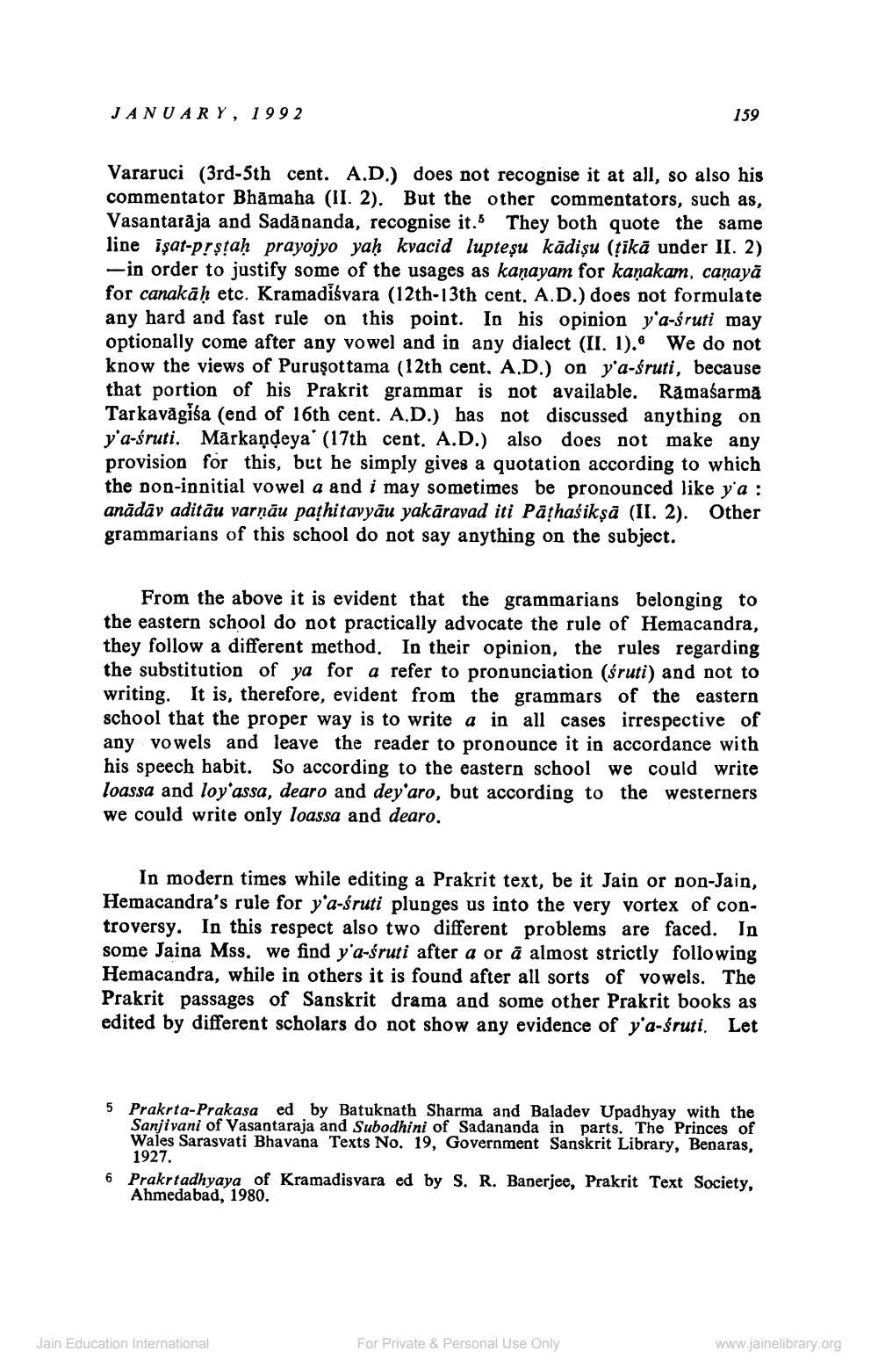________________
JANUARY, 1992
Vararuci (3rd-5th cent. A.D.) does not recognise it at all, so also his commentator Bhamaha (II. 2). But the other commentators, such as, Vasantaraja and Sadananda, recognise it." They both quote the same line isat-pṛṣṭaḥ prayojyo yaḥ kvacid lupteşu kādiṣu (ṭīkā under II. 2) -in order to justify some of the usages as kanayam for kaṇakam, caṇayā for canakaḥ etc. Kramadiśvara (12th-13th cent. A.D.) does not formulate any hard and fast rule on this point. In his opinion y'a-śruti may optionally come after any vowel and in any dialect (II. 1). We do not know the views of Purusottama (12th cent. A.D.) on y'a-śruti, because that portion of his Prakrit grammar is not available. Ramaśarmā Tarkavägisa (end of 16th cent. A.D.) has not discussed anything on y'a-śruti. Markaṇḍeya' (17th cent. A.D.) also does not make any provision for this, but he simply gives a quotation according to which the non-innitial vowel a and i may sometimes be pronounced like y'a : anādāv aditāu varṇāu paṭhitavyāu yakāravad iti Päṭhaśikṣā (II. 2). Other grammarians of this school do not say anything on the subject.
From the above it is evident that the grammarians belonging to the eastern school do not practically advocate the rule of Hemacandra, they follow a different method. In their opinion, the rules regarding the substitution of ya for a refer to pronunciation (śruti) and not to writing. It is, therefore, evident from the grammars of the eastern school that the proper way is to write a in all cases irrespective of any vowels and leave the reader to pronounce it in accordance with his speech habit. So according to the eastern school we could write loassa and loy'assa, dearo and dey'aro, but according to the westerners we could write only loassa and dearo.
159
In modern times while editing a Prakrit text, be it Jain or non-Jain, Hemacandra's rule for y'a-śruti plunges us into the very vortex of controversy. In this respect also two different problems are faced. In some Jaina Mss. we find y'a-śruti after a or a almost strictly following Hemacandra, while in others it is found after all sorts of vowels. The Prakrit passages of Sanskrit drama and some other Prakrit books as edited by different scholars do not show any evidence of y'a-śruti. Let
5
Prakrta-Prakasa ed by Batuknath Sharma and Baladev Upadhyay with the Sanjivani of Vasantaraja and Subodhini of Sadananda in parts. The Princes of Wales Sarasvati Bhavana Texts No. 19, Government Sanskrit Library, Benaras,
1927.
6 Prakrtadhyaya of Kramadisvara ed by S. R. Banerjee, Prakrit Text Society, Ahmedabad, 1980.
Jain Education International
For Private & Personal Use Only
www.jainelibrary.org




